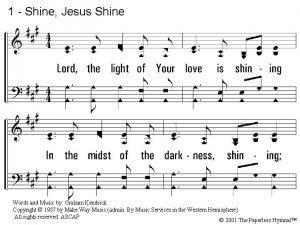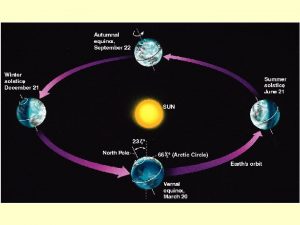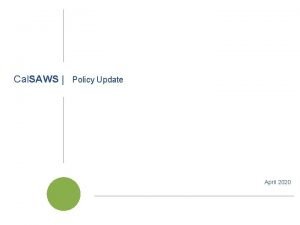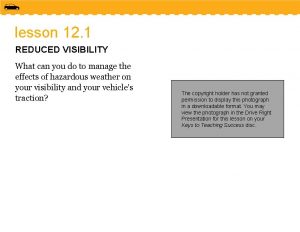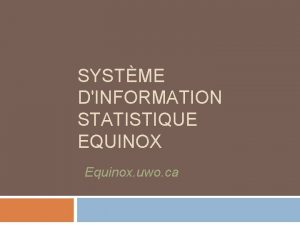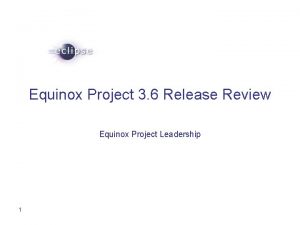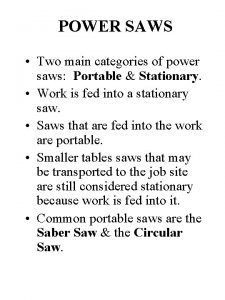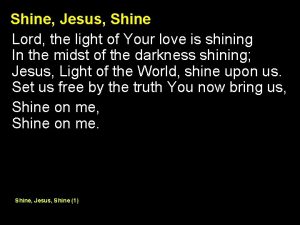The EQUINOX Ms Lithakazi Shine Mkatshwa SAWS Regional











- Slides: 11

The EQUINOX Ms. Lithakazi Shine Mkatshwa SAWS Regional Training Centre 2022 -01 -07 1

MOVEMENTS OF THE EARTH RELATIVE TO THE SUN • The Earth revolves around the Sun in an elliptical path - REVOLUTION • The North/South axis is not vertically orientated 2022 -01 -07 2

• The Earth rotates on an imaginary axis that runs from the North Pole to the South Pole - ROTATION • The Earth rotates from West to the East • Complete cycle takes 24 hours (Day and Night) • This is seen as the sun rising in the East and setting in the West 2022 -01 -07 3

POINTS OF IMPORTANCE 90 o N North pole 66½o N Arctic circle 23½o N Tropic of Cancer 2022 -01 -07 0 o Equator 23½o S Tropic of Capricorn 66½o S Antarctic Circle 90 o S South Pole 4

2022 -01 -07 5

ROTATION OF THE EARTH - DAY AND NIGHT • In this diagram the Sun is seen shining onto the Earth • The subsolar point is the place on the Earth where the Sun’s rays fall directly onto the Earth’s surface • This area therefore receives the maximum intensity from the rays of the Sun 2022 -01 -07 6

IMPORTANCE OF THE SUBSOLAR POINT • When the Sun shines directly over 23½o N, the Sun’s rays will be at right angles, 90 o, to the Earth, point A. 23½ o • Point B, at 66½o S, the Sun’s rays reach the Earth’s surface at only 23½o. • At point C, the sunlight reaching the South pole is zero. North Pole Subsolar point A South Pole C B Not scale Notto to scale • Point A experiences warmer conditions and point C colder conditions 2022 -01 -07 7

REVOLUTION OF THE EARTH - SEASONS • The Earth revolves around the Sun in an elliptical path while at the same time the Earth is rotating on its axis which is tilted at an angle of 23½o • One of the most important reasons for the occurrence of the seasons is the position of the subsolar point • The greatest solar radiation intensity occurs at the subsolar point. • As the Earth revolves around the Sun the subsolar point will move northwards and southwards during the Earth’s revolution around the Sun in a one year period. 2022 -01 -07 8

AUTUMN IN THE SOUTHERN HEMISPHERE • The subsolar point is seen to be directly over 0°, the Equator - perpendicular to Earth's axial tilt B Equinox 2021 was at 11: 37 on Saturday 20 March • Represents autumn in the Southern Hemisphere and spring in the Northern Hemisphere. • Day and night are of equal length • Known as the autumn equinox 2022 -01 -07 9

SUN’S POSITION DURING THE SEASONS • The sun appears higher above the horizon during summer. • The sun gradually drops lower to the horizon during Autumn Spring until reaching its lowest point during winter. 2022 -01 -07 10

Thank you! 2022 -01 -07 11

